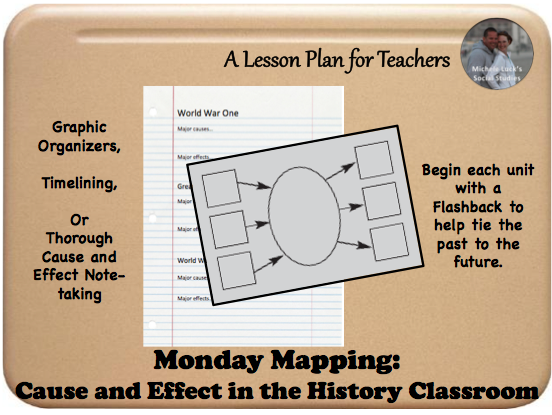Students often see historic occurrences as isolated events in time, not understanding that one causes the other and that one causes the next. In both my World and U.S. History courses in mid February, I would be in the early 20th Century, discussing the World Wars and the changes that occurred in the decade between.
While the time period lends itself to be taught as WWI, the Between the Wars Period, and WWII, it’s best if students can understand all as a chain of inter-related events that brought us into the modern world, with national alliances and global conflicts that lead us straight to modern day.

While Cause and Effect are part of the CC State Standards, it is often only taught within individual units, and the Big Picture connection is left out of neglected altogether. This method leaves students seeing this lack of cohesion, eventually learning that history is nothing but unconnected topics over time.
And teaching Cause and Effect is not the incredible challenge it seems at first glance. And unlike many other academic routines, it can be started at any point in the school year. Here are just a few suggestions to get you started:
- Create a Build-Upon Timeline that students keep in their notebook and update with each unit, summarizing after each with the major causes and effects that lead from one era to the next.
- Add a Graphic Organizer between unit notes to connect the dots, including significant changes that lead one time period into the next.
- Transition into each new unit with a Flashback into the previous unit, pulling the themes together as you move from period to period.
- Assign Transition Essays where students conclude each unit with a culminating essay that addresses the major changes of the period and the impact they may have on the future.
Once the task is started in your classes, it can become routine with each unit, providing a concise summary of the major periods in history and their impacts upon one another. More importantly, your students will learn the significance of Cause and Effect and have a better sense of how to be proactive in their futures.
What will you be teaching these next few weeks? Here are my regular units for this time period:
- Progressive Era Through WWI US Unit
- Between the Wars Project
- WWI & Russian Revolution World Unit
- WWII World History Unit

Happy Teaching!